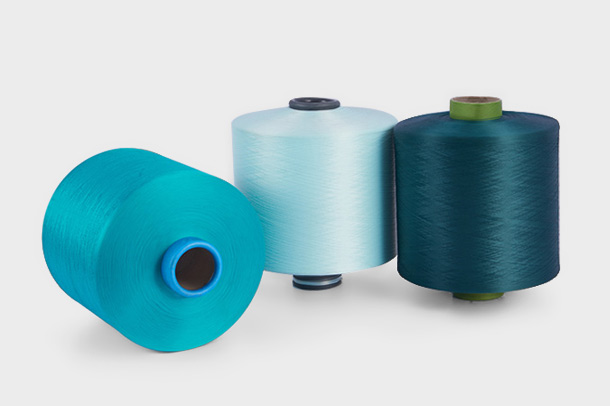Abstract:What are the characteristics of flame retardant polyester yarn?
The characteristics of pure polyester flame retardant ya...
The characteristics of pure polyester flame retardant yarn: pure polyester flame retardant yarn is soft to the touch, good flame retardant effect, obvious flame retardant effect, no open flame when burning, and automatically extinguished. It has been widely used in textiles, home textiles, curtains, carpets, seat cushions, webbing and other fields Applications. It is an ideal raw material for the production of flame retardant fabrics and blankets. Various specifications and ratios can be customized and spun according to customer requirements. Flame retardant yarn is a special fabric that can delay flame combustion. Clothing, industrial fabrics, widely used in fire protection, clothing, petroleum, electric power, natural gas, metallurgy, machinery, mining, chemical industry, coal, shipping and other industries
Flame retardant yarn: Flame retardant yarn products have been widely used in window screens, curtains, tent blankets, curtains, sofas, bedspreads, sheets, blankets, curtains and other fabrics in public places. Product features: a) Excellent flame retardant performance and environmental protection ① It will be extinguished immediately after leaving the fire, and will not continue to burn. ② It still maintains flame retardant performance after multiple washings. ③ It has no toxicity, no black smoke and no sexual odor when burning. ) The company's flame retardant product quality domestic and international flame retardant fabrics have passed the "national certification sampling inspection", reaching the mandatory national standard GB20286-2006 washing resistance and flame retardant grade 1 (that is, the original national standard flame retardant B1 level), the product flame retardant performance LOI=33-40, all products can provide the "Flame Retardant Product Anti-counterfeiting Label" issued by the Fire Bureau's Flame Retardant Product Label to meet the needs of users for various flame retardant textiles.
Flame retardant polyester yarn: flame retardant polyester has a wide range of applications due to its flame retardancy. In addition to its irreplaceable role in industrial textiles, building interior decoration, and vehicle interior decoration, it also plays an important role in the field of protective clothing. less effect. According to the national standards for flame retardant protective clothing, metallurgy, forestry, chemical, petroleum, fire protection and other departments should use flame retardant protective clothing. The number of people who should use flame retardant protective clothing in China is more than one million, and the market potential of flame retardant protective clothing is huge. In addition to pure flame-retardant polyester, we can produce flame-retardant, waterproof, oil-repellent, anti-static and other multi-functional series products according to the special requirements of users. For example, the waterproof and oil-repellent finishing of flame-retardant polyester fabric can improve the functionality of flame-retardant clothing; the use of flame-retardant polyester and conductive fibers are interwoven to produce anti-static flame-retardant fabrics; the use of flame-retardant fibers and high-performance fibers for blending and interweaving , It can produce high-performance flame-retardant fabrics; flame-retardant fibers are blended with cotton, viscose and other fibers to improve the performance of protective clothing and reduce secondary.
Flame retardant polyester, polyester modified fiber with limited oxygen index (LOI of 26~34) Most flame retardant polyester (including filament and staple fiber) has similar physical and mechanical properties, appearance and post-processing properties to ordinary polyester. Only The strength of a few fibers (such as wistel Fr) is slightly lower than that of ordinary polyester, but it does not affect textile processing. Because the structure of flame retardant fibers is relatively loose, the dye molecules are easy to enter, so the dyeing speed is faster than ordinary polyester, and disperse dyes or Cationic dye dyeing. The main manufacturing methods are: (1) Copolymerization flame retardant modification, such as using tetrabromobisphenol A hydroxyethyl ether or phosphorus-containing compounds as comonomers, and dimethyl terephthalate and ethylene glycol The alcohol is obtained by transesterification and polycondensation to obtain a copolymer, which is then obtained by melt spinning and drawing; (2) Blending flame retardant modification, adding phosphorus-containing compounds or halogen-antimony composite flame retardants to the spinning melt , and then obtained by melt spinning and stretching; or using composite spinning components to add flame retardant in the core layer, and the skin layer is ordinary polyester. The fibers prepared by this method not only improve the flame retardancy and flame retardancy durability, It also reduces the impact on fiber properties. Although the effect of blending flame retardant modification is not as good as that of copolymer type, the process is simple; (3) Flame retardant finishing, using phosphorus or halogen-containing olefinic monomers, is carried out on fibers or fabrics It is prepared by surface polymerization or graft copolymerization or treated with tripolynitrile ammonia. Mainly used for interior decoration such as curtains and bedding; Conveyor belts in flammable and explosive factories, etc.

